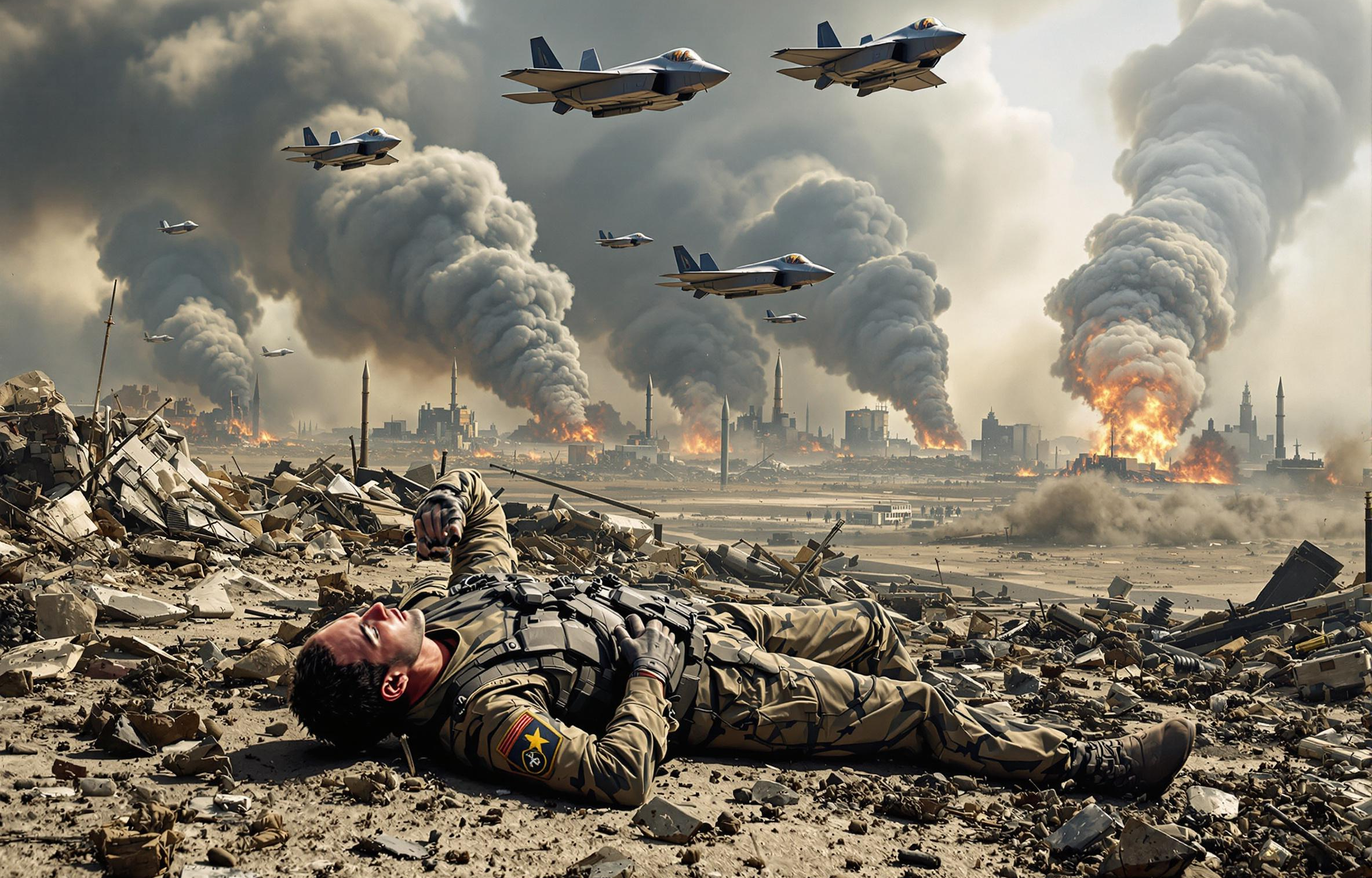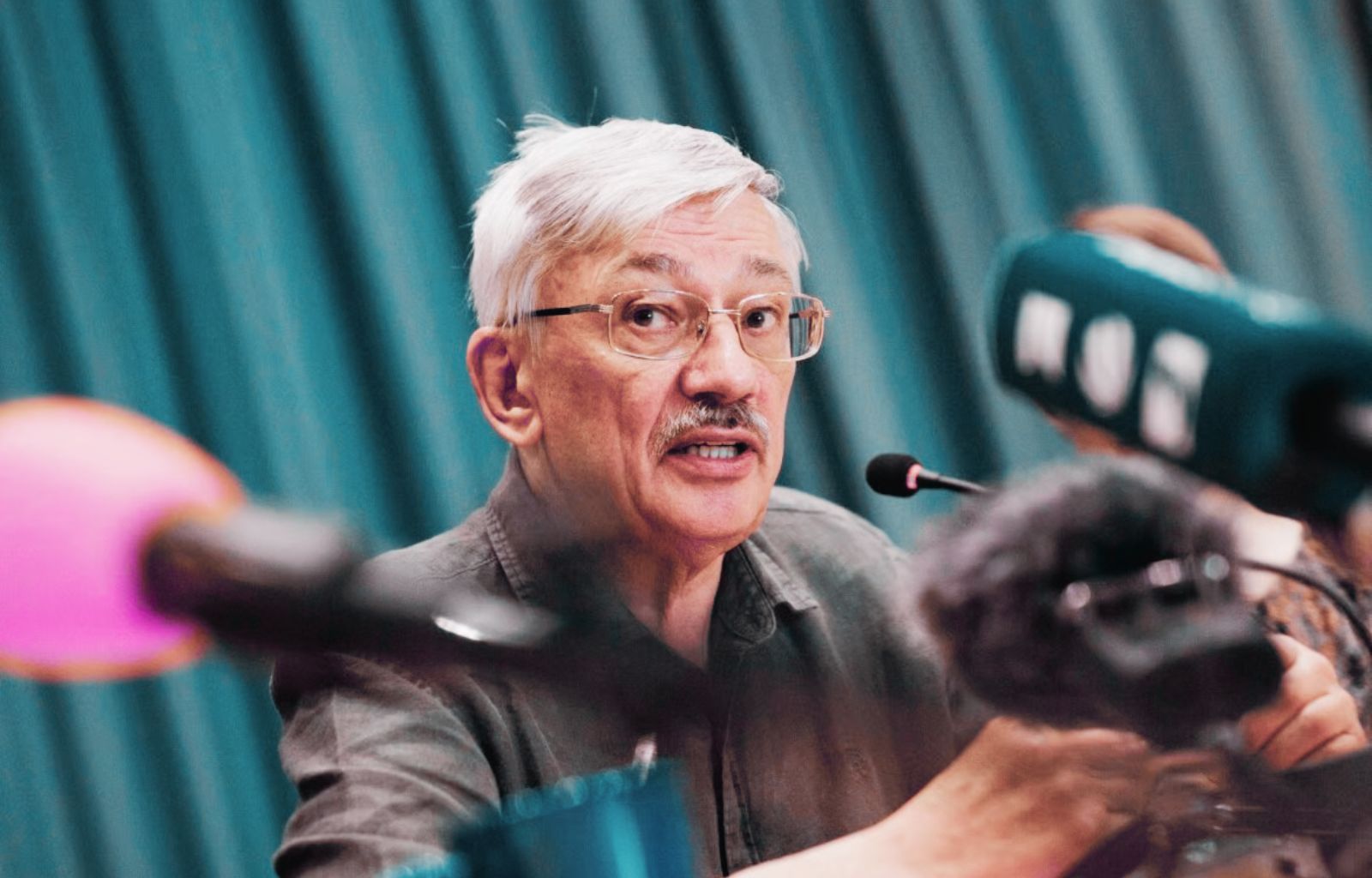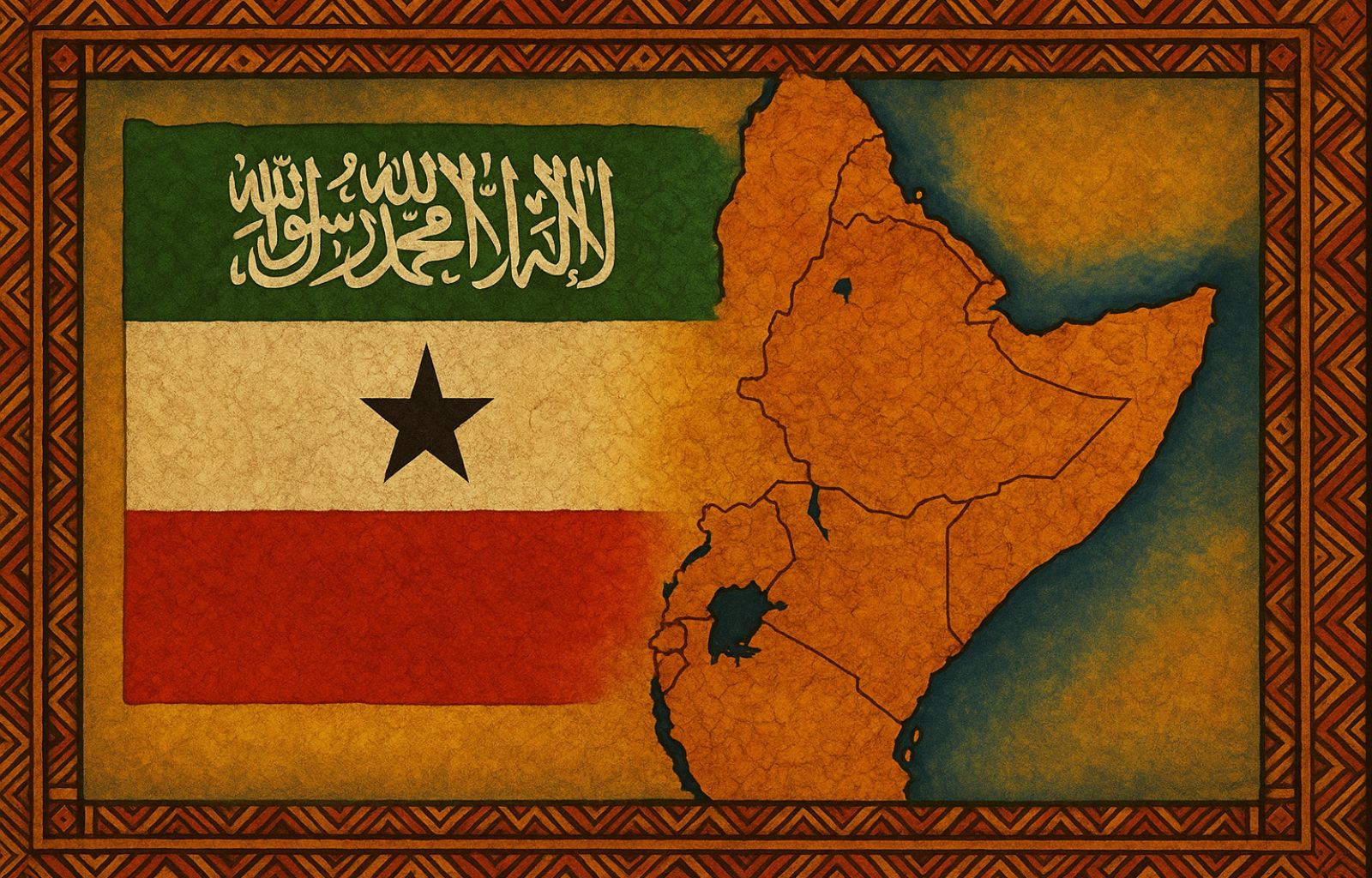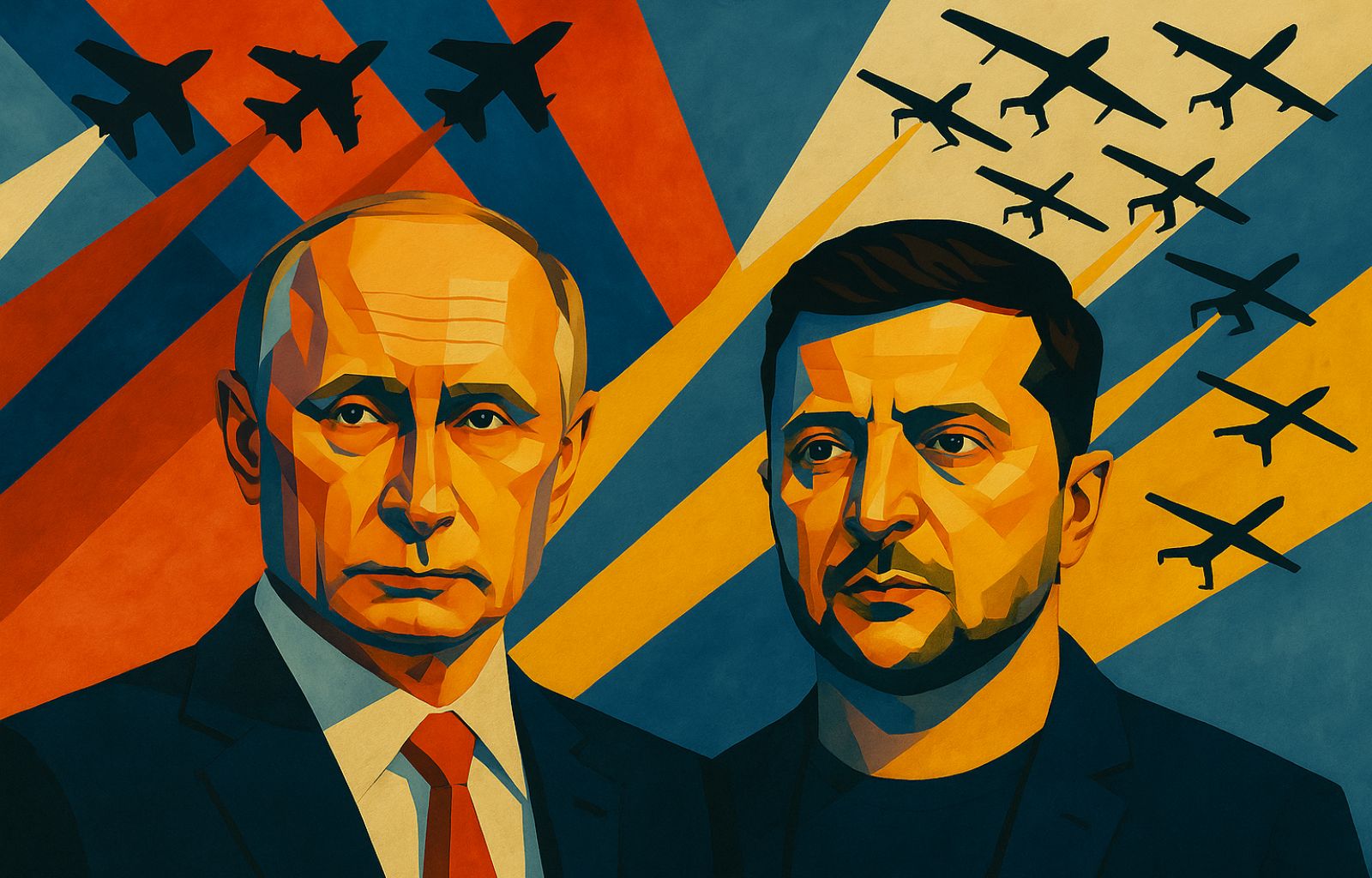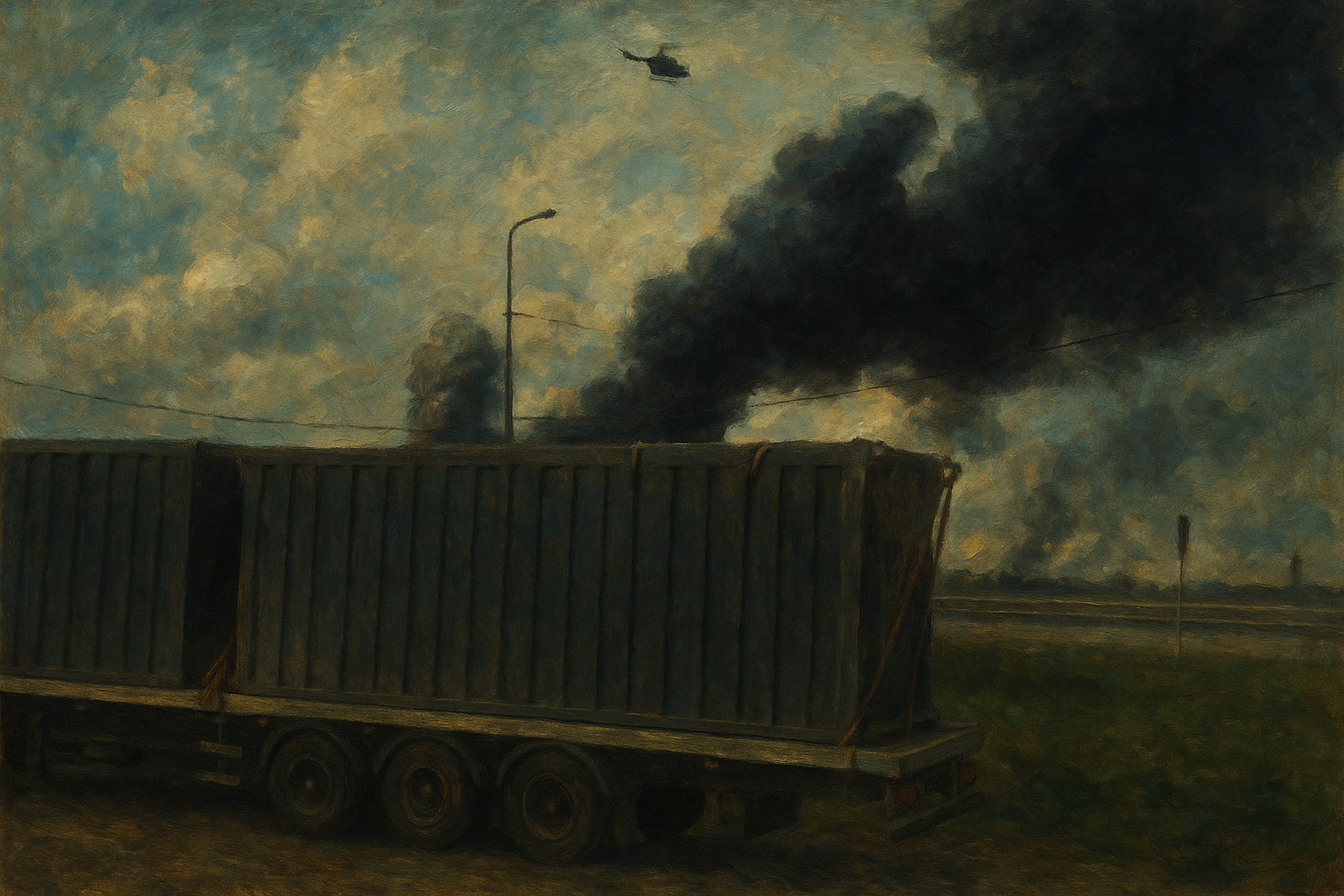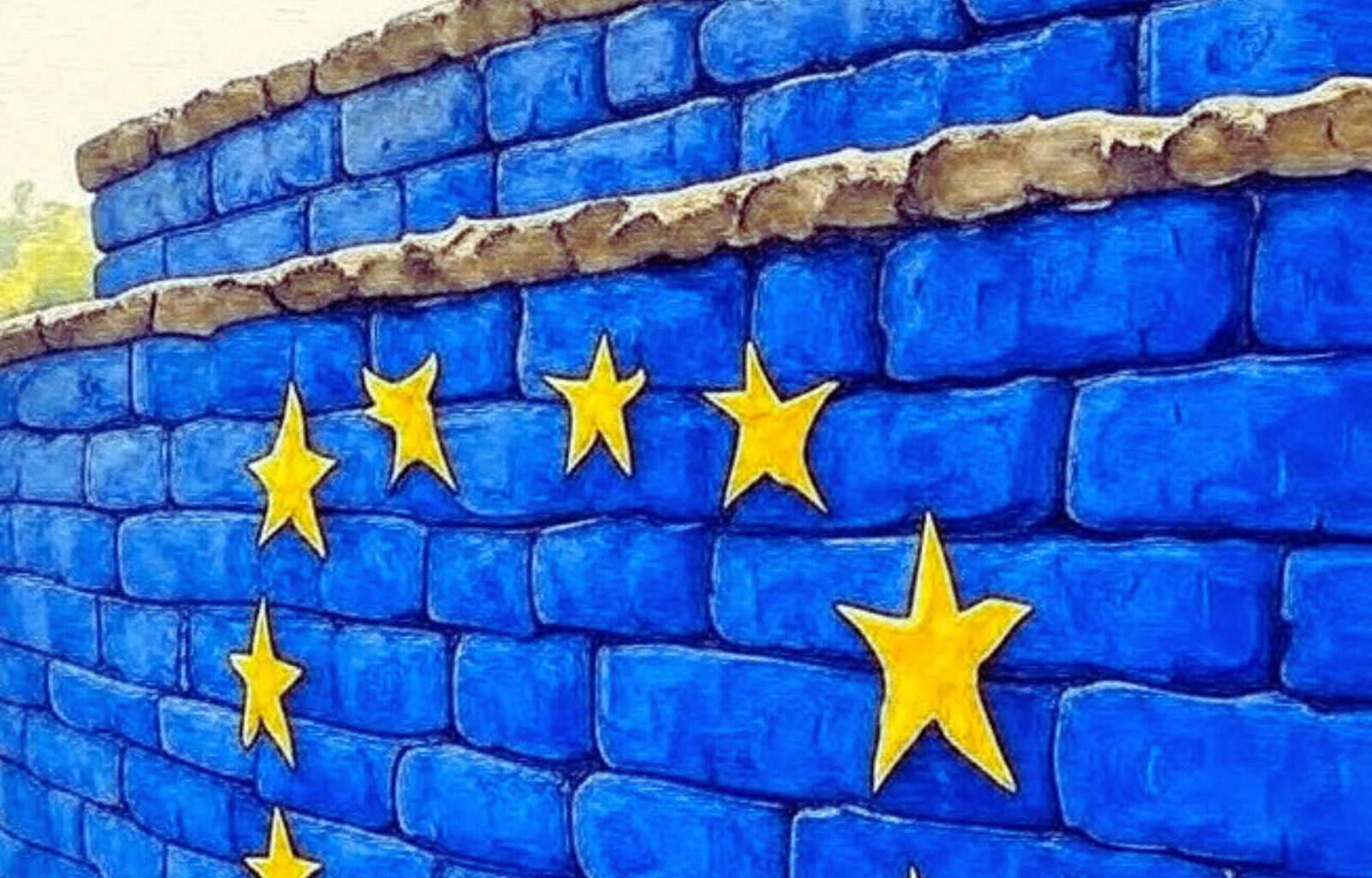Israel-Iran military escalation, the crisis redefining the Middle East
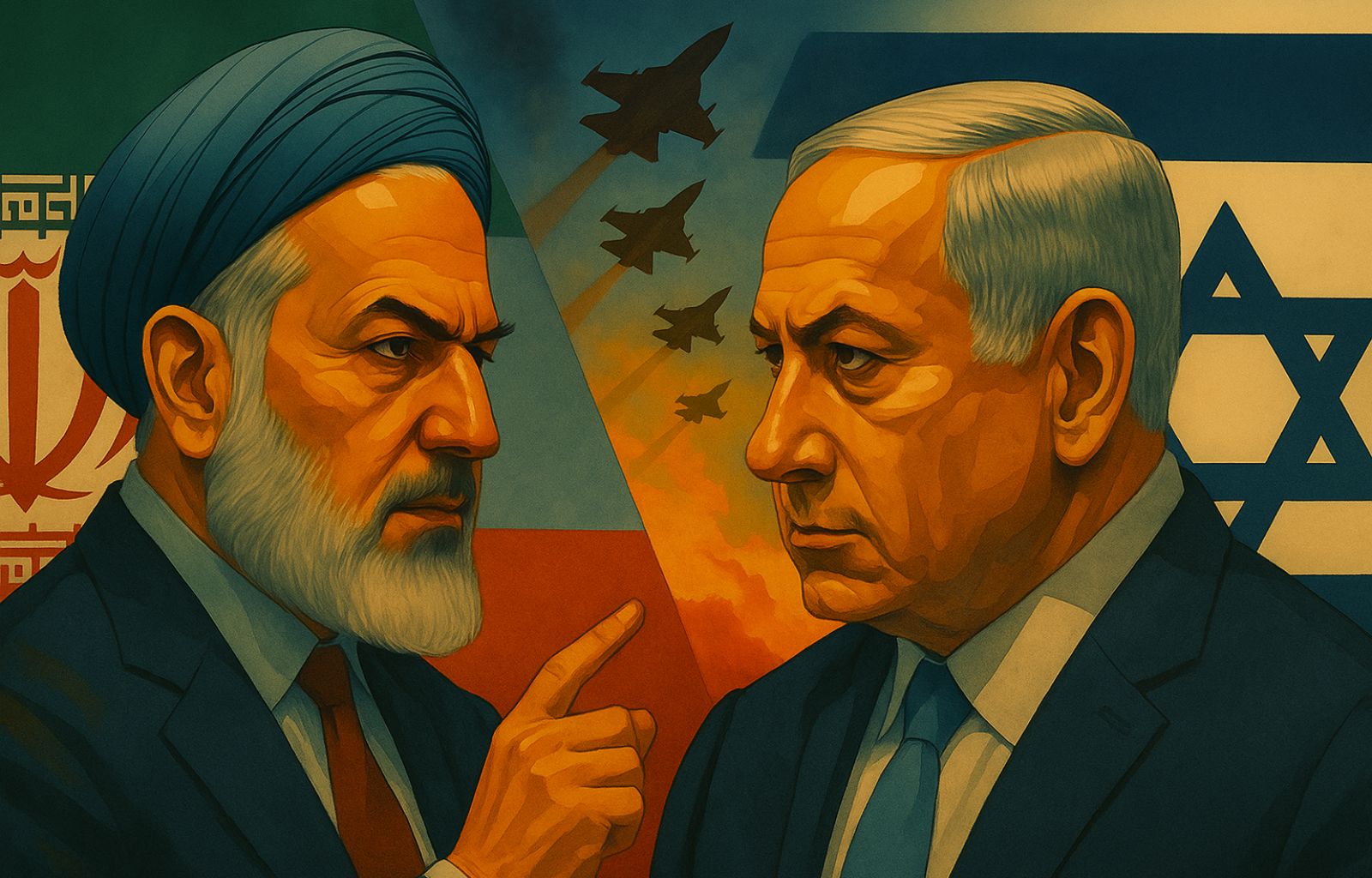
The night between Thursday and Friday marked a point of no return in relations between Israel and Iran. In a high-intensity military operation, Israel struck several strategic nuclear and missile sites on Iranian territory, marking the beginning of a new phase of conflict in the region. According to Iranian official sources, theattack resulted in the killing of top figures in the Iranian security and defence system: Hossein Salami, commander of the Revolutionary Guards, and Mohammad Bagheri, head of the regular army. These are symbolically and operationally devastating losses for Tehran, with potential knock-on effects on the regime’s internal resilience.
Operation Rising Lion
The Israeli operation was not improvised: according to numerous Western intelligence sources, it was part of a long-developed operational plan, ready to be activated if information about the rapid advancement of Iran’s nuclear weapons programme was confirmed. The green light was given by a recentIAEA resolution which, for the first time in twenty years, officially condemned Iran for non-proliferation violations. Levels of uranium enrichment to 60 per cent, as stated in the report, and access to sufficient material for nine nuclear warheads, have accelerated an already ongoing dynamic: the breakdown of ambiguous deterrence.
Israel, through the mouth of Prime Minister Benjamin Netanyahu, called the affected sites an‘existential threat‘, justifying the action as a‘necessary pre-emptive strike‘. The Israeli doctrine of deterrence was thus transformed into preventive action, based on the assumption that Iranian nuclear escalation could no longer be contained by diplomatic means. Within this framework, Israeli public communication aligned with a logic of emergency framing: the narrative of inevitability.
Iran, for its part, reacted with declarations of imminent retaliation. And retaliation has arrived: more than 100 drones have been launched against Israel, in what appears to be the first phase of a structured response. However, signs coming from Tehran indicate that the Iranian leadership is trying to calibrate its response: balancing the need to preserve its strategic credibility without plunging into an all-out war that could jeopardise the resilience of the domestic political system.
Israel attacks, the balance is broken: motivations and scenarios of the new crisis
The Israeli military operation of 12 June against strategic targets in Iran represents the most radical reconfiguration of the Middle East balance since the US invasion of Iraq in 2003. It was not an accidental escalation nor a show of force without planning: it was theimplementation of an integrated strategic plan, prepared long ago and calibrated according to a logic of anticipatory deterrence.
The decision to strike came in a context where Israel’s strategic options were now limited. The failure of the JCPOA negotiations, the impossibility of bringing Tehran back within the bounds of international law, and – above all – the IAEA’s formal resolution certifying the violation of non-proliferation obligations constituted a tipping point. The level of uranium enrichment at 60 per cent, the amount of fissile material sufficient to build nine nuclear warheads, and the opacity of the nuclear military sites represent an intolerable picture forIsraeli strategic intelligence, which judged Iran’s transition to the status of a dormant nuclear power to be imminent.
The attack, therefore, takes the form of a preventive strike, aimed at degrading the technical-industrial capabilities of the Iranian programme and interrupting the cycle of internal legitimisation that the regime had built around the nuclear project. For Tehran, that programme is not only an instrument of external projection, but a symbolic lintel of internal power, capable of reinforcing the narrative of autonomy, pride and self-defence against the West. Hitting it means attacking an element of identity, with potential effects also on the maintenance of domestic consensus and on the hegemony of the Revolutionary Guards, deprived of their military and techno-scientific leaderships in one fell swoop.
Israeli communication tactics
The element of discontinuity also lies in Israeli communication tactics, which accompanied the operation with a clear-cut public narrative: Netanyahu spoke of an ‘existential threat‘ and anticipated the possibility of further attacks. It is a break from the practice of ambiguity strategy that had hitherto characterised Israel in its operations against the Iranian nuclear programme. Today, the choice has been made to overlap communication and operation, in order to maximise the psychological impact.
The reactions were not long in coming. Tehran responded by launching more than 100 armed drones, a clear signal that it has entered a kinetic phase of the conflict, with tangible risks of escalation on a regional scale. The manner of the response indicates that the retaliation will not be symbolic or limited. Iran’s regional proxies – Hezbollah in Lebanon, the Shiite militias in Syria and Iraq, the Houthis in Yemen – represent a distributed military apparatus, ready to activate on several fronts, even asymmetrically. FOLLOW LIVE

The logistical and geographical context aggravates the situation. The Strait of Hormuz, for example, can become a strategic choke point. The mere fear of a trade disruption has already had systemic effects on the energy market, signalling the vulnerability of the global economy to high-intensity regional crises. The perception of political risk in the Middle East is now at its highest since 2011.
Diplomacy stunned: Iran-US talks fail
On the diplomatic level, the twist also broke a fragile negotiating balance. Just these days, US and Iranian officials were supposed to meet in Oman for a new round of informal nuclear talks. The attack made those negotiations obsolete before they had even begun. In this framework, the US role is confirmed as ambiguous: President Donald Trump claimed to have been informed in advance, but specified that the US was not involved militarily. A formula aimed at maintaining the plausible deniability typical of the Trumpian strategy, useful to protect the national interest without compromising domestic political capital.
Washington’s behaviour represents, in itself, a narrative discontinuity. The United States, while retaining global strategic primacy, no longer acts as the lynchpin of regional security. The Trumpian redefinition of foreign policy, oriented towards transactionalism and selective engagement, has produced a strategic leadership vacuum, which other actors – Israel in primis – are filling according to unilateral logic.
The picture that emerges is one of a systemic breakdown of the regional balance. Conventional deterrence has been replaced by active deterrence, in which deterrence is subordinated to the ability to strike first.
If Iran decides to react forcefully, a regionalisation of the conflict is possible, with destabilising effects on Syria, Iraq, Lebanon and the Persian Gulf. If instead it chooses a deferred and indirect response, we will enter a phase of permanent strategic attrition, where instability will be structural and normalised.
In any case, the Middle East paradigm has been rewritten. The era of strategic patience, intermittent negotiations and negotiating ambiguities is over. We now enter a phase in which words count for less than warheads, and in whichcommunicative hegemony is no longer a substitute for operational superiority.
Trump, America and the strategic interregnum
The behaviour of the US, and in particular of President Donald Trump, in the context of the Israeli attack on Iran is paradigmatic of a clear strategic misalignment between Washington and Tel Aviv. Trump has publicly stated that he received prior information about the operation, while making it clear that the US did not participate militarily. This attitude is a deliberate functional ambiguity: it allows the US not to expose itself to reprisals, while retaining a margin of influence and political control over regional dynamics.
In the days leading up to the attack, Trump had called on Netanyahu to refrain, saying that ‘a conflictcould very well happen‘, but wishing that negotiations could be safeguarded. The result is a sophisticated narrative: ‘I didn’t know everything, but I knew enough’. A mix of operational deniability and symbolic strategic sharing, allowing the United States to formally withdraw from the conflict while maintaining an asset of rhetorical governance on the international stage.
The internal political environment of the Trump administration was already leaning towards a selective disengagement from the Middle East. The US-Iran negotiations in Oman, scheduled for 15 June, were perceived as the last opportunity for a diplomatic breakthrough. However, the Israeli attack led to their suspension. In this sense, the return to the logic of hard power, with the cutting of the openings of soft diplomacy, configures a Washington following the strategy of avoiding escalation by keeping the door open only wide enough.
The consequences of this choice are many and profound:
- Geographical restructuring of regional security: the Israeli operation activates a response chain involving Iranian proxies in Lebanon (Hezbollah), Syria, Yemen. This opens a phase of multi-frontal conflict that risks extending the war into different theatres.
- Global energy impact: Iran could close or disrupt the Strait of Hormuz, increasing pressure on oil prices and introducing systemic economic uncertainty in the markets.
- Fractured multilateral leadership: the precedent of a unilateral attack without a validated UN mandate erodes trust in collective governance and encourages future pre-emptive operations by other actors.
- Reversal in nuclear deterrence: the attack demonstrates that even a potentially nuclear programme can be militarily neutralised. A crisis of credibility of Iran’s nuclear deterrent ensues, but at the same time a new platform of preventive deterrence is established, the success or failure of which may draw the future boundaries of power in the region.
Ultimately, the Trump administration is orchestrating a strategic interregnum: formally it maintains the course of diplomacy, while operationally it leaves room for Israel to redefine the boundaries of regional security. The American message is clear: we avoid direct escalation, but we do not stop deterrence. This hybrid approach of careful disengagement places the US in a position of invisible director, leaving others to act while keeping themselves on the sidelines, deployed but not in the field.
The communicative weight of power: narrative, deterrence and diplomatic absence
In the contemporary conflict, strategic communication is no longer ancillary: it conditions, precedes and in many cases replaces it. The Israeli attack was accompanied by an existential narrative, designed to orient internal and external public opinion even before the kinetic impact. PM Netanyahu spoke of a ‘looming nuclear threat‘ and a ‘last useful window‘ to intervene, establishing permanent emergency language. This ‘moral shock’ effect serves to neutralise possible international condemnation, forcing external actors – first and foremost the United States – to show complicit silence or face accusations of treason in the face of fragile and polarised electorates.
On the opposite side,Iran appears to be lagging behind the narrative. The deaths of Salami and Bagheri were deployed through a rhetoric of religious martyrdom, with the aim of strengthening domestic consensus. However, that kind of appeal, based on traditional heroic narratives, fails to hold internationally. The regime seems more concerned with internal cognitive control – pure control of domestic sentiments – than with the global message. Externally, Iran’s communicative effectiveness remains limited because it has not been able to disentangle the loyalist symbolic narrative from the diplomatic discontinuity imposed by the Israeli attack.
Meanwhile, US communication takes on the traits ofmimetic ambiguity. President Trump claimed to have been ‘briefed’ in advance, but made it clear that the US was not participating militarily, offering a carefully calibrated message. The US statement seeks to signal acknowledgement of the American strategic role without taking direct responsibility, in a manner that could be described as operationally nebulous. This approach allows the US to remain in a position of power – if necessary – while leaving the management of the conflict to the regional actor.

The ineffable role of world diplomacy
Meanwhile, formal world diplomacy is silent. TheEuropean Union has produced a generic communiqué insisting on ‘moderation’ and ‘the need for dialogue’, politically correct language but lacking strategic specificity or political stance. Its absence from the narrative confirms the EU’s inability to act as an autonomous strategic actor in the Mediterranean. European silence is not harmless: it reinforces the Israeli narrative and creates a vacuum that no one – neither the UN nor third powers – seems willing to fill. It is acommunicative self-exclusion from global crisis management.
The real problem is a narrative one. What is missing is an ‘architectural narrative’, i.e. an interpretative framework capable of attaching the Israeli attack to a systemic vision: a framework linking diplomacy, international law, nuclear security and multilateral governance. Israel merely justifies an immediate gesture; Iran wields religious symbols through ritual rhetoric; the US proceeds by subtraction, neutralising its regional historicity with a language of non-intervention without compromise. In this vacuum, key words such as ‘multilateral prevention’, ‘normed crisis management’ or ‘global governance of proliferation’ are missing.
The consequence is that the conflict becomes a sequence of atomised acts: bombs, drones, threats, economic measures. Each move, if deprived of an overall narrative, loses political-strategic power. Communication becomes a phase following action, instead of anticipating or governing it. When narrative is absent, only acts remain – and acts without narrative are ephemeral forms of influence that are difficult to replicate.
After 12 June: a new global strategic paradigm
TheIsraeli-Iranian escalation is thus the result of an opaque and deconnected communication system: the protagonists act, but no one coordinates the meanings. International politics becomes kinetic again, without shared meta-narratives, and this weakens preventive strategies. In a world that requires subjects with a narrative vocation, the lack of an integrated influence strategy leaves room for only one ‘government’ of the conflict: the immediate effect of the bomb.
The night of 12 June did not just mark a local escalation, but the beginning of a new global strategic paradigm: nuclear deterrence was transformed from a static taboo into a dynamic threat – a preventive deterrence that transcends mere weaponry to assert the ability to strike first and best. In short, Israel wanted to declare: ‘I can intervene without multilateral consent, and guarantee myself strategic priority’.
This development has triggered a radical breakdown of balances, on several levels. Firstly, geopolitical: Iran is forced to decide whether to accept strategic surrender or react with escalation – risking turning the entire Middle East region into a multi-frontal battlefield. The potential military repercussions are amplified by Iran’s network of proxies in Lebanon, Syria, Iraq and Yemen, which act as crisis multipliers. Should a multi-front conflict erupt,systemic instability would become unstoppable, with the resulting political and human cost.
Operationally, the geography of the war changes: the Strait of Hormuz and the shipping lanes in the Gulf become potential targets, with immediate impacts on the global energy market. A prolonged conflict would put security of supply under pressure, with a spillover effect on oil prices and the already fragile European economy.
The definitive dismissal of multilateralism
At the institutional and symbolic level, the crisis sanctions the collapse of multilateral governance: the UN mechanisms, the JCPOA, the IAEA – all intermediary instruments designed to prevent the use of arms – are overtaken by unilateral military action. A new order is thus established where hard power and unilateral narratives prevail over the shared diplomatic architecture.
The United States, with Trump in the lead, remains a calibrated spectator: presented as informed and willing, but distant from direct action. Their policy moves in the grey area of symbolic involvement, leaving operational management to Israel, but maintaining margins of strategic control. It is a careful disengagement, heralding a new American model: less material presence, more façade work.
It is theEuropean Union and its institutions that pay a high price in terms of strategic credibility. Faced with a scenario of military escalation with global implications, official communication from Brussels has been limited to generic formulas of ‘moderation’ and ‘dialogue’, devoid of any performative potential. No concrete initiative for political mediation, no proposal for de-escalation, no attempt to construct a coherent narrative framework within which to interpret the attack and direct the international response. A silence that is not neutrality, but active self-exclusion from the writing of the crisis.
The need for shared narratives in the new geopolitical world
In the new Year Zero of post-2025 geopolitics, the word retains enormous weight – but only if anchored to a vision and strategic design. Today, weapon systems, attack vectors, and unilateral choices dominate: in this context, a fragmented or delayed narrative loses any ordering function. Every shot fired without a shared metanarrative is not a message, but an isolated act that eludes diplomacy and fuels improvisation.
For Europe, the challenge is radical: to abandon the posture ofcautious invocation and equip itself with a political grammar adapted to systemic conflictuality. Without a common voice, without an integrated strategic vision, the EU is doomed to oscillate between a notarised function and geopolitical marginality. In a world where crises are increasingly narrative rather than kinetic, the lack of a shared language is more dangerous than a tactical error.
In the time of post-diplomacy, the strategy of silence is an illusion: unless it is preceded by an ability to frame events in a balanced project. And if Europe continues to be a cautious spectator, unable to articulate its own line, the result will always be the same: leaving the stage to those who are not afraid to occupy it.


